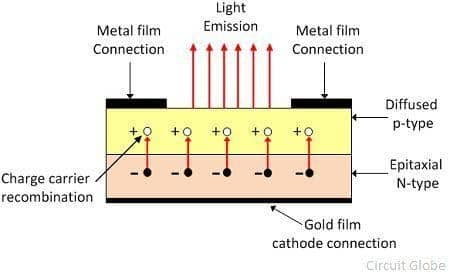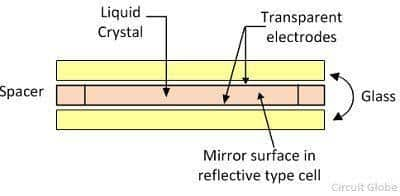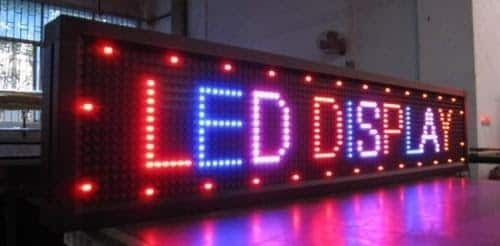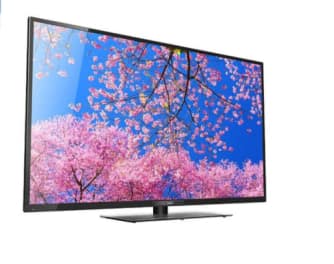Difference Between Lcd and Led - A Complete Guide
In this article we will discuss about the difference between LED (full form – Light Emitting Diode) and LCD (LED Vs. LCD), what LCD stands for, also difference between LED and LCD TV, which is better LED or LCD , what is OLED and its application,.
This Story also Contains
- Difference Between LCD and LED
- Definition of LED
- Definition of LCD
- OLED
- Which gives the best picture quality: LCD or LED?

Full forms or Abbreviations
LCD stands for Liquid crystal Display
LED – Light Emitting Diode
OLED – Organics Light Emitting Diode
TV – Television
HDTV – High Definition Television
LED TV – Light Emitting Diode Television
Also check-
Difference Between LCD and LED
LED(Liquid Emitting Diode) | LCD Liquid Crystal Display | ||
How pictures is created | |||
LED TVs don't have fluorescent bulbs, instead they have a variety of small LED bulbs that allow for better control over where the light travels across the screen. Thanks to their less significant size, the LEDs can be located at the back of screen and around the edges of the screen for a brighter, clearer picture | LCD TVs( LCD meaning – Liquid Crystal Disply) use a highly efficient fluorescent tube behind the screen that emits light that illuminates the changing pixels on the screen. | ||
Quality of the Pictures- The sharpness of a television picture is proportional to its refresh rate. Refresh rate is nothing but the number of image changes per second. Instead of displaying smooth motion, the TV displays “frames” per second, creating the illusion of a moving picture. | |||
LED TVs have higher refresh rates | LCD TVs have Lower refresh rates | ||
LED have better light control | LCD have poor light control | ||
LED can produce perfect bright and dark color also they can be individually dimmed | LCD cannot produce the perfect dark or bright color and it can’t be dimmed at specific place | ||
Comparison of viewing angle | |||
LED have much smaller angle than the LCE because of their bulkiness. | LCD gives the better viewing angle than LED | ||
Comparison of efficiency | |||
LEDs are more efficient. | LCDs are less efficient. | ||
|
| ||
LED TVs are nothing more than LCD TVs that use LEDs for background lighting; LCD panels that create the actual image on the screen require an external light source to create a visible image. Basically, millions of elements on an LCD screen filter light from behind the panel, creating the pixels you see. In both cases, however, you might see a black screen or just a bunch of LEDs in the box.
Early LCD TVs used cold cathode fluorescent lamps (CCFLs) for backlighting, but LEDs began replacing them about 10 years ago as they allowed TVs to be thinner, lighter, and less fragile. ). they are used in a technique known as full array local dimming [FALD], where individual LEDs can be turned on and off based on image content) black and proportional best response. FALD.LED is certainly an improvement over CCFL, but the difference probably doesn't justify buying a new game at the time; I have an 11-year-old CCFLit backlit LCD TV in my living room that I would definitely not throw away due to newer lighting technologies.
Of course, TV makers who love to push forward new disruptive technologies if it allows them to buy a new TV (why do you think they started pushing 8K hardware when they aren't?), Even though 4K has reached its limit human eye) began to advertise these LED TVs as "LED TVs." The reality is, of course, that your marketing is good for your results, but it's sad to see so many people don't understand how television works.
Definition of LED
The abbreviation LED stands for a light emitting diode. An LED is a PN junction diode that emits light when forward current flows through it. LEDs are manufactured by doping p-type and n-type materials. When energy passes through the LED, there is a recombination of P-type and N matter charges. The recombination of charges produces energy in the form of heat and light.

A semiconductor material that is translucent (transmits light) and emits light through its junction. The liquid crystal used in the display has the properties of both solid and liquid. When no electricity is supplied through the liquid crystal, it becomes transparent, but after activation, the crystal scatters light in all directions and looks shiny.
Also read :
- NCERT solutions for Class 12 Physics Chapter 14 Semiconductor Electronics: Materials, Devices and Simple Circuits
- NCERT Exemplar Class 12 Physics Solutions Chapter 14 Semiconductor Electronics Materials, Devices and Simple Circuits
- NCERT notes Class 12 Physics Chapter 14 Semiconductor Electronics: Materials, Devices and Simple Circuits
Definition of LCD
LCD screens are used to display text and images as a matrix of dots or segments. The LCD has a liquid crystal filament filled between transparent electrodes. When a current flows between the electrodes, the filaments are excited and emit visible light.
The structure of the LCD screen is shown in the figure below. Liquid crystals used in displays have both solid and liquid properties. When no voltage is applied to the liquid crystal, it becomes transparent, but upon activation, the crystal scatters light in all directions and appears bright.

The LCD monitor uses less power and also has a 7-segment display, but it is slow and takes longer to convert. Direct current will shorten their lifespan, which is why they are mainly used with alternating current with frequencies below 500 Hz.
OLED
OLED stands for Organic Light Emitting Diode and is a type of display technology that involves placing a film of carbon between two objects that conduct electricity and cause the film to emit light.
NCERT Physics Notes :
Which gives the best picture quality: LCD or LED?
The picture quality on the LED screen is much better than on the LCD screen. LED lights use RGB contrast to make the TV screen almost bright, which is a pleasure for viewers. It is important to be very clear that LEDs are not cheap at all. While its durability, high image quality, energy saving features and eye protection technology make it a worthwhile investment when compared to less durable and low quality LCD screens. when the biggest and best product is available at a slightly higher price, giving your customers countless benefits. LED lights can be more expensive in price, but they are definitely worth it.
LEDs are generally considered third generation displays. We meet the needs and preferences of the new generation. They are also more attractive in design. With a growing space shortage in a new residential area, what could be better than an ultra-thin LED screen to provide a comfortable cinematic experience in their home. People today prefer LED light, whether old or new generation, everyone is choosing to switch to LEDs from LCDs to make life more interesting and better.
Also read -
- NCERT Solutions for Class 11 Physics
- NCERT Solutions for Class 12 Physics
- NCERT Solutions for All Subjects
Frequently Asked Questions (FAQs)
LED stands for Light Emitting Diode even as LCD is brief for Liquid Crystal Display. The distinction among the 2 is the location and kind of light used. LEDs use diodes even as LCDs use fluorescent lights. LEDs also are slimmer than LCDs and offer a higher fine, clearer photograph with excessive definition output.
LED’s closing longer with a lifespan of round 100,000 hours. On the alternative hand, LCDs have a shorter lifespan of 75,000 hours.
LEDs have higher photograph fine due to the fact they've RGB coloration wheels established in them, which produce sharper and extra sensible images. Moreover, mild-emitting diodes have a dimming property, which permits them to show correct colorations through blockading immoderate mild.
LED TVs are extra green and eat much less strength. They also can paintings with low strength re-assets and are like minded with turbines and sun panels, making them 20 to 30 percentage extra energy-green than
LEDs are brighter and feature higher contrast, making them a first-rate preference for gaming. But they’re additionally ext

